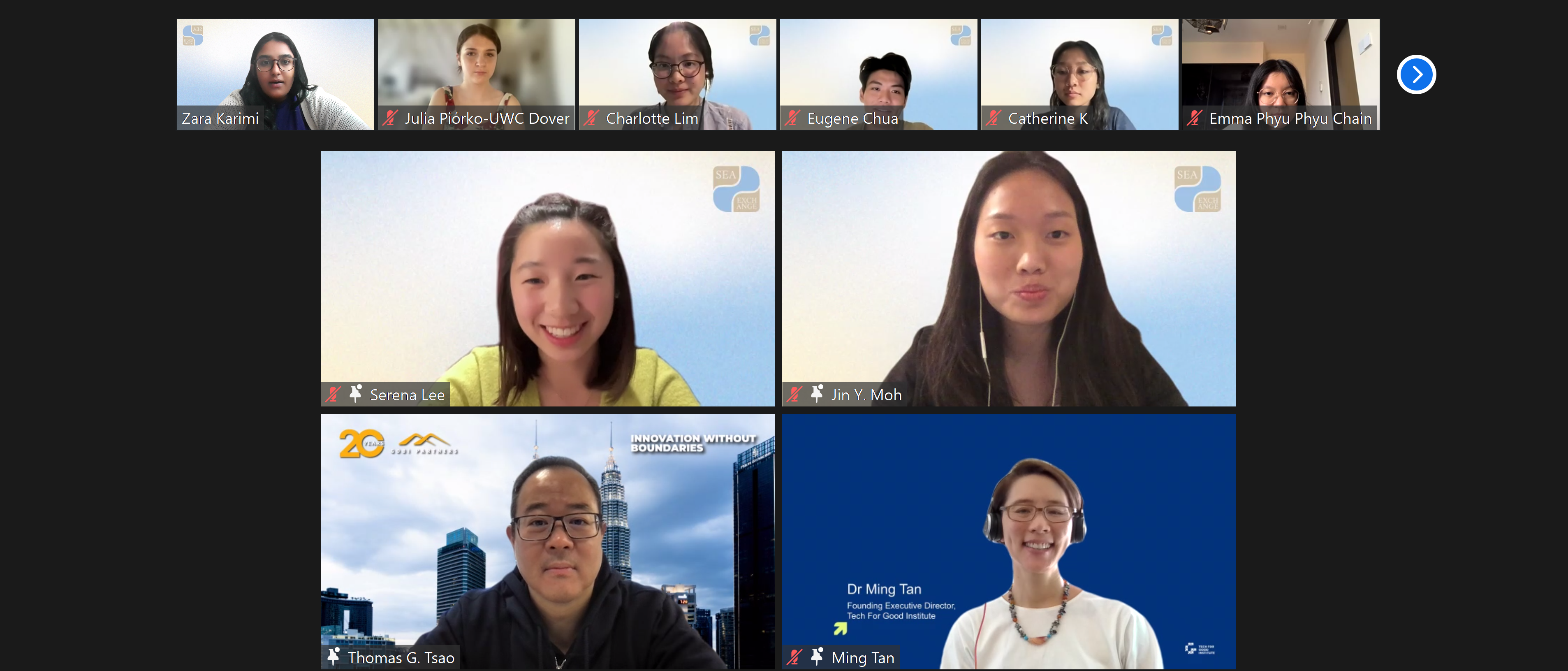
By Serena Lee, The Southeast Asia Exchange
Southeast Asia’s digital transformation will likely be one of the greatest drivers of regional development over this century. With 460 million Internet users – 20 million new users joining in 2022 alone – the rapid adoption of technology in the region has highlighted digitalisation’s growing influence on our social and economic communities. Heightened innovation and entrepreneurship further fuel the trend toward greater tech adoption, with regional tech start-up funding growing 50 times in the last decade, reaching a staggering US$7.7 billion in 2020.
As Southeast Asia embraces new technologies, aligning innovation with the public interest is critical. In the next phase of Southeast Asia’s digital era, industry, civil society, and governments must collaborate to properly steward human-centred tech that addresses the needs of communities and advance society’s best interests. But in Southeast Asia’s diverse and heterogeneous context, the notion of a society’s “best interests” can often be ill-defined. It is high time for technologists, consumers, and governments alike to ask ourselves who we are innovating for, what our priorities are, and how we can advance innovation while remaining sensitive to the risks inherent in accelerating digitalisation.
Good Tech Understands and Addresses Human Needs
As we navigate our region’s digital innovation landscape, it is crucial to assess whether the technology in question serves a genuine purpose. After all, technology is merely a tool for problem-solving. The question then arises: how do we determine which problems merit our attention?
Firstly, we should consider whether the problem has a social impact. Consider the situation in Cameron Highlands, Malaysia, following the lockdown imposed in March 2020. With farmers struggling to secure transport services to deliver their produce, excess supply led to food waste even when many low-income families were grappling with food insecurity. To address this challenge, Lazada stepped in and utilised its platform to connect farmers with consumers, facilitating the sale of produce and reducing waste during the lockdown period. Such use of technology displays intimate familiarity with the actual needs of the community and a solution innovated to improve lives.
Secondly, human needs must be considered throughout the entire design process, not just during conception. In a region characterised by cultural and ethnic diversity, inclusivity must be a primary consideration in product design. This requires a comprehensive approach that considers all aspects of the product, from its high-level design and use cases to the granular data the system trains on or takes as a default. This is especially critical in the new wave of Artificial Intelligence (AI) developments, where the quality of the data on which systems are trained determines the quality of their outputs. As we integrate AI deeper into how we live our lives and make decisions, we must be mindful of the possible systemic biases that may reflect the training data.
Internet Access is Key to Unlocking Tech’s Potential for Underserved Communities
Until we bridge the digital divide, technology’s potential to aid underserved communities will remain untapped and may even exacerbate existing inequities.
The banking sector is a good case in point. In the last decade, many financial technology (fintech) start-ups have emerged across Southeast Asia – in fact, it is estimated that fintech ventures will make up 11% of the financial services sector by 2025. One critical issue that fintech could address is the underbanking of individuals in rural areas who have historically lacked access to traditional financial institutions. Several fintech ventures, including Payfazz in Indonesia, have targeted rural areas with innovative solutions.
However, despite the region’s mobile-first landscape, which should have been conducive to rapid progress, underbanking remains a challenge.
Two major obstacles have hindered the potential of technology to tackle underbanking. Firstly, millions of Southeast Asians remain without internet access. As of 2022, roughly one-third of the adult population, or 150 million adults, lacked internet broadband. While the region boasts an impressive 132% mobile penetration rate, it is clear that access is unequally distributed. At the regional level, only four ASEAN countries – Singapore, Malaysia, Brunei and the Philippines – have internet access to over 90% of their populations.
The second component is literacy. Low digital literacy prevents many from enjoying the full benefits of technology. This digital divide is especially pronounced along gender lines. For instance, 39% of Myanmar women hesitate to use the Internet due to safety concerns, low literacy, or affordability.
Technology holds tremendous potential to uplift historically underserved groups across sectors, but to unlock this potential, we must first address the digital divide.
Bridging the Digital Divide is Still a Work in Progress
The issue of digital inclusion is gaining prominence in legislative agendas. Edward O. Wilson famously stated, “We have Palaeolithic emotions, mediaeval institutions, and godlike technology.” In ASEAN, governments are starting to take steps to catch up with the rapidly evolving digital landscape by introducing new policy frameworks that address emerging challenges associated with digitalisation. This is evident, for example, from the introduction of national personal data privacy acts and initiatives like the Bandar Seri Begawan Roadmap for integrating digital economies across ASEAN.
However, innovation continues to progress more quickly than regulation and it is often difficult for policymakers to keep up with novel developments taking place in the digital arena. Thus, we must mobilise industry leaders, investors, and members of civil society, all of whom play a part in shaping the innovation landscape, and tap into their collective expertise to formulate tech policy in pace with digital innovation. Improving digital literacy, both among policymakers and the wider public, is another important dimension to this. Initiatives from industry like the Grab Academy, that provides courses on cybersafety and digital skills to Grab’s large network of drivers and delivery partners, exemplify how non-government actors can step up in the interim.
Finally, governments must develop a more unified approach to addressing tech adoption. At the moment, the disparate agencies within national governments often result in imperfect alignment on tech policy initiatives. To address this, governments should be more intentional about streamlining a unified, national framework on digitalisation. Such a framework should be flexible enough to adapt to the needs of specific ministries while maintaining the level of synchronicity needed to effectively shape the innovation landscape and avoid pitfalls caused by conflicting policies. Dr. Ming Tan emphasises that “coordination, learning, and open conversation” are essential to achieving this goal.
About the Southeast Asia Exchange
The Southeast Exchange aims to create space both for greater cross-cultural dialogue between Southeast Asian youths and for more critical engagement with issues in the region. For more information, visit their website or connect with them via LinkedIn or Instagram.
The views and recommendations expressed in this article are solely of the author/s and do not necessarily reflect the views and position of the Tech for Good Institute.



